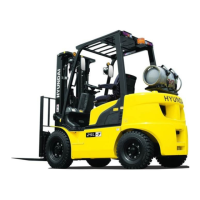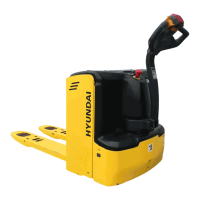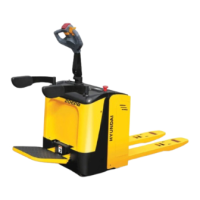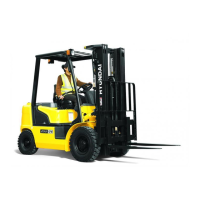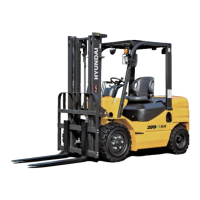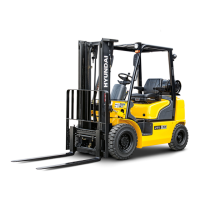What to do if power is not transmitted in my Hyundai 20L-7?
- HHeidi RomeroAug 15, 2025
If power is not being transmitted in your Hyundai Forklifts, it could be due to several issues. Start by checking the oil level and adding oil if necessary. A damaged clutch plate could be the problem; listen for abnormal sounds at low converter speed and replace if damaged. Inspect the oil pump driving system for wear on the pump gear, shaft, and spline, replacing any defective parts. Other potential causes include a broken shaft, lack of oil pressure, improperly positioned inching valve and link lever or forward/reverse spool and link lever. Also, check for a clutch that fails to disengage or is seizing, a broken clutch snap ring, or a damaged clutch drum. For each of these, you should disassemble, check, and repair or replace the faulty components.
